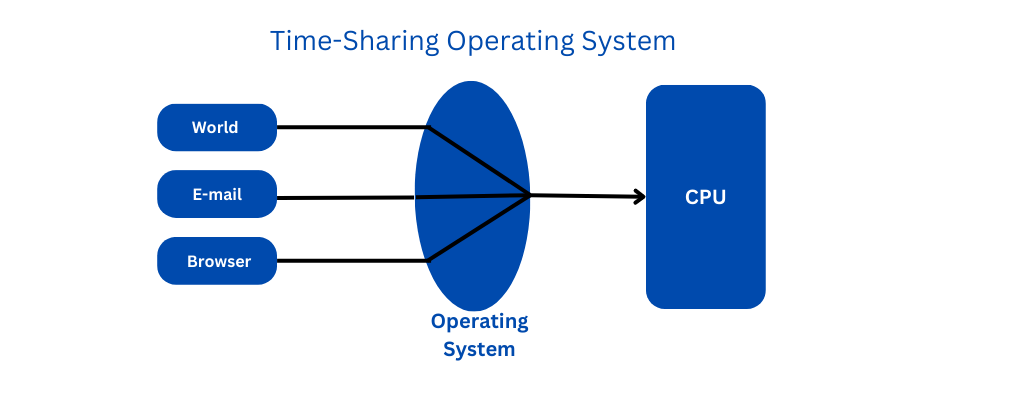Introduction
Table of contents
In today’s fast-paced digital world, computer technology has become an essential component of our daily lives. Whether we are browsing the internet, creating documents, or playing games, we rely on computers to accomplish our tasks. However, computer systems are only as efficient as their underlying operating systems. One such operating system that has revolutionized the world of computing is Time Sharing Operating Systems (TSOS). In this article, we will explore what Time-Sharing Operating Systems are , how they work, and why they are essential for maximizing computing efficiency.
What are Time Sharing Operating Systems ?
Time Sharing Operating Systems are a type of operating system that enables multiple users to share a computer’s resources simultaneously. Unlike traditional operating systems, which allow only one user to use the computer at a time, Time Sharing Operating Systems divide the computer’s resources among multiple users. This enables multiple users to work on the same computer system simultaneously.

How does Time Operating Systems Works ?
Time-Sharing Operating Systems work by dividing the computer’s resources into small time slices. Each user is allocated a time slice during which they can use the computer’s resources. When the time slice is up, the Time Sharing Operating System switches to another user, allocating them a new time slice. This process continues until all users have been allocated a time slice.
Why are the Time Sharing Operating Systems Important ?
1.Maximizing Computing Efficiency: Time-Sharing Operating Systems enable multiple users to use a single computer system simultaneously, maximizing the system’s efficiency.
2.Resource Management: Time Sharing Operating Systems manage computer resources efficiently, ensuring that each user has access to the resources they need without monopolizing the system’s resources.
3.Cost-Effective: Time Sharing Operating Systems are cost-effective, as they enable multiple users to use a single computer system instead of requiring each user to have their own computer system.
4.Improved User Experience: Time Sharing Operating Systems provide a seamless and uninterrupted user experience, as users can work on the same computer system simultaneously without experiencing any delays or interruptions.
FAQs
Q:What is the difference between Time Sharing Operating Systems and Multi-Programming Operating Systems?
A: Time Sharing Operating Systems enable multiple users to share a computer’s resources simultaneously, whereas Multi-Programming Operating Systems enable a single user to execute multiple programs simultaneously.
Q: Can Time Sharing Operating Systems run on modern computers?
A: Yes, Time Sharing Operating Systems can run on modern computers, although they are typically used in specialized environments such as data centers and scientific research labs.
Q: What are some examples of Time Sharing Operating Systems?
A: Some examples of Time Sharing Operating Systems include Unix, Linux, and Windows Terminal Server.
Conclusion
In conclusion, Time-Sharing Operating Systems have revolutionized the world of computing by enabling multiple users to share a single computer system simultaneously. By dividing computer resources into small time slices, Time Sharing Operating Systems maximize computing efficiency, manage resources efficiently, and provide a cost-effective and seamless user experience. Whether you are a scientist, researcher, or business owner, Time Sharing Operating Systems are an essential tool for maximizing your computing efficiency. So, if you haven’t already, it’s time to consider implementing a Time Sharing Operating System in your computing environment.
Related Topics
- Batch Operating System
- Time-Sharing Operating Systems
- Real-Time Operating Systems
- Distributed Operating System
- Network Operating System
- Scheduling
- Multi Purpose Scheduling
- Preemptive and Non Preemptive Scheduling
- Synchronization
- Semaphores
- Deadlock
- Process Management